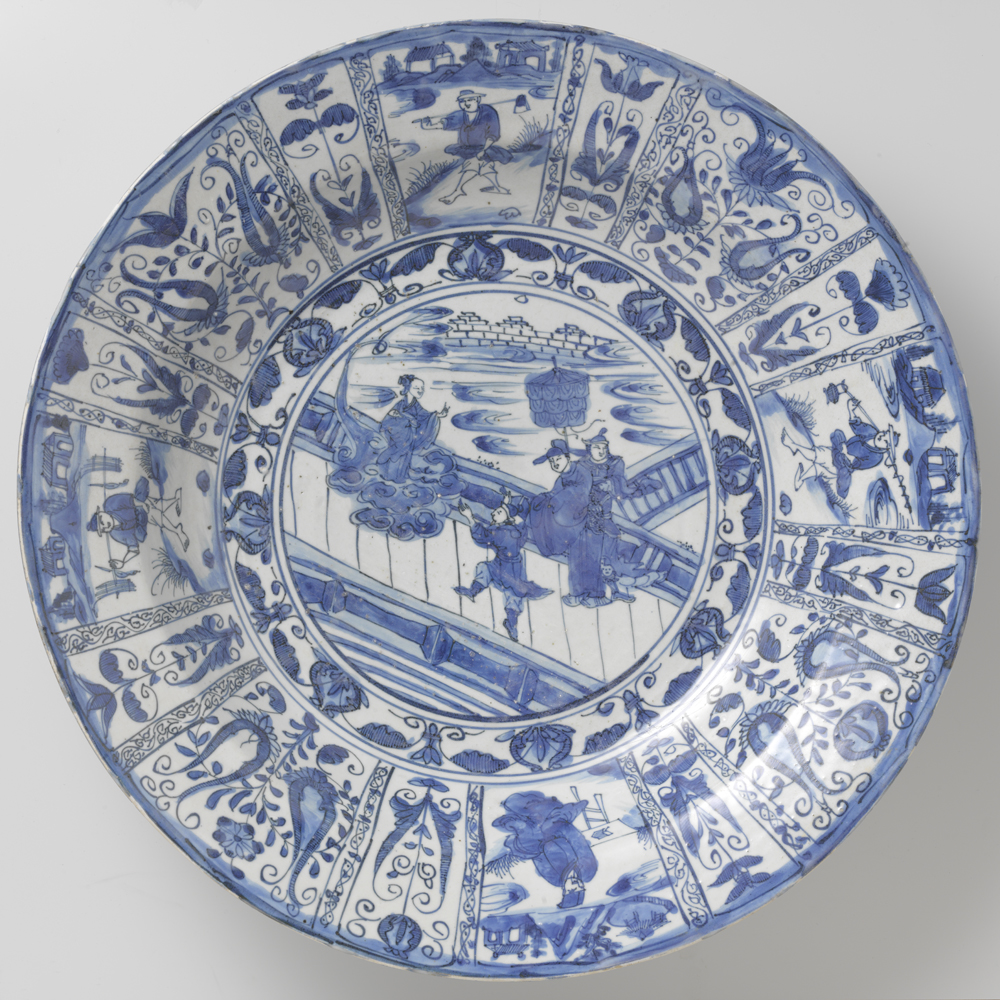Stop 16 - Kraak Saucer
Saucer, anonymous, 1635-1645. Rijksmuseum AK-RBK-15794
This porcelain dish was made in China at a time when Europeans had not yet worked out how to produce porcelain; this would only be discovered by chance in the early 18th century in Meissen, Germany. In the seventeenth century the Dutch East India Company dominated the European import of expensive and highly desired porcelain from China and Japan.
Porcelain, like spices, was a highly desired status symbol in Europe; only the very rich could afford it. Naturally, they were keen to display their wealth by showcasing porcelain pieces in places where visitors could admire them for example in special porcelain cabinets of the women of the Orange-Nassau dynasty.
Single dishes like this plate might adorn a table as a special feature. Porcelain was believed to have almost magical qualities because of its simultaneous characteristics of translucence and hardness. Surrounding themselves with lots of porcelain, often also displayed with other precious objects from Asia such as lacquer boxes, made the wealthy elite feel proud and successful especially since the access to these objects was a privilege restricted to those who had connections to the Dutch East India Company.
Although this dish was made in China, its design seems to have been ordered by a Dutch customer. This dish shows how the Dutch imagined China and Chinese people. Painted with cobalt on white porcelain are scenes depicting Chinese farmers carrying produce from the field, a scholar or scribe sitting next to a desk and in the centre of the plate we see Chinese male courtiers, possibly eunuchs, helping a very well dressed Chinese court lady to step safely out of a small barge onto a footpath. If you look closer at the decorations on the rim of the plate you will easily recognise a motif that has become today a well-known symbol of the Dutch – the tulip. In the seventeenth century tulips were a foreign and incredibly expensive luxury that was initially imported from the Ottoman Empire and then grown for an enormous profit by a few gardeners in the Netherlands. Everyone looking at this dish must have admired it for its beauty - and possibly secretly envied the owner for being able to afford it.


- Back to the start
-

Introduction
return